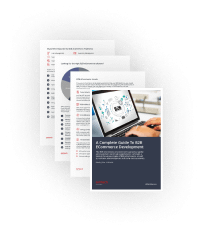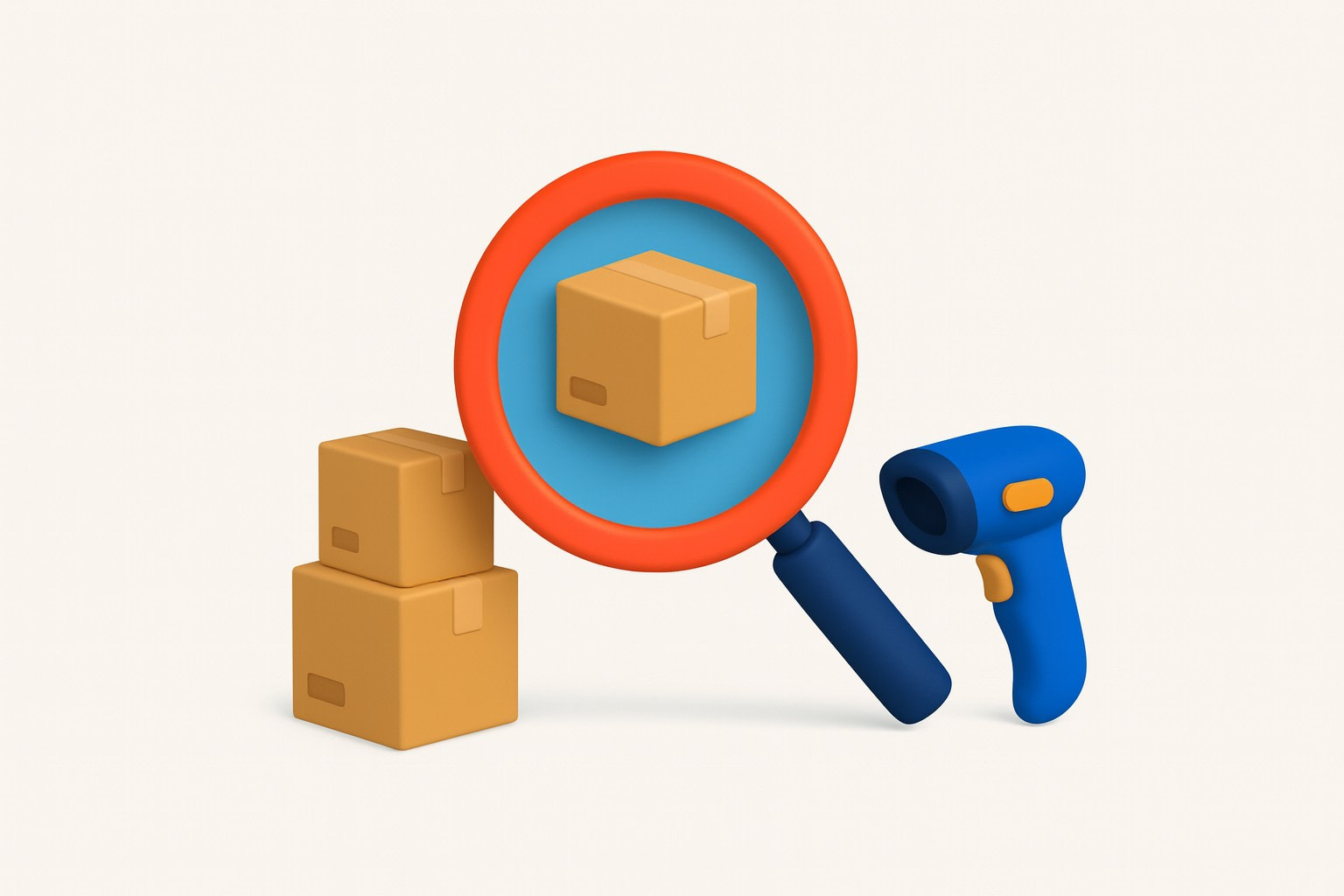Wholesale eCommerce is the buying and selling of goods in bulk through online platforms. Instead of serving individual consumers, eCommerce wholesalers supply products to other businesses — retailers, distributors, or even large end users — at reduced unit prices. This model has traditionally operated offline through trade shows, sales reps, and phone orders. By 2025, wholesale has largely moved online, transforming into a digital-first ecosystem that combines efficiency, transparency, and scalability.
By moving online, wholesalers can reduce costs, automate complex processes like pricing and order approvals, and reach new markets without relying solely on physical presence or manual sales operations.
Types of Wholesalers and Distribution Models
Wholesale eCommerce encompasses a wide range of business models, each serving a unique role in the supply chain.
1. Manufacturers
Producers selling directly to businesses in bulk, cutting out intermediaries. This model maximizes margins for the manufacturer and provides cost benefits to buyers.
Example: Nike sells directly to retailers via its wholesale B2B portals, supplying chains like Foot Locker with bulk orders of shoes and apparel.
2. Distributors & Import/Export Specialists
Middlemen who buy in large volumes from manufacturers and resell across regions, often managing logistics, customs, and compliance. They act as the bridge between global supply and local demand.
Example: Sysco in the U.S. distributes food and beverages from multiple producers to restaurants, hospitals, and schools.
3. Agents & Brokers
Intermediaries who do not hold stock but facilitate transactions between buyers and sellers. They earn commissions for each deal and often add value through market knowledge, negotiation, or compliance support.
Example: C.H. Robinson acts as a freight and logistics broker, matching shippers with carriers for the wholesale distribution of goods.
4. Dropshippers
Wholesalers or suppliers who fulfill orders on behalf of retailers, shipping products directly to end customers. This eliminates inventory risk for the retailer but requires strong supplier reliability.
Example: Printful offers dropshipping for customized apparel, printing and shipping products directly to customers for eCommerce sellers.
5. Marketplace Wholesalers
Digital platforms that aggregate multiple suppliers in one interface, allowing B2B buyers to compare prices, check stock, and order in bulk. These platforms often add payment, compliance, and logistics tools to streamline procurement. Marketplace wholesalers can also benefit from a B2B procurement platform, offering streamlined procurement and integration with multiple suppliers to optimize purchasing workflows.
Example: Alibaba.com enables small retailers to source wholesale goods globally with simplified ordering and payment terms.
6. Hybrid Wholesalers
Modern wholesalers often combine models, blending direct sales with marketplace participation or offering dropshipping alongside bulk orders. This hybrid approach provides resilience against supply chain disruptions and caters to varied customer needs.
Example: Ingram Micro supplies enterprise-grade technology hardware in bulk but also offers logistics and fulfillment services to smaller resellers.
7. Vertical Market Specialists
Wholesalers focusing on a niche industry, providing not just products but also tailored value-added services (e.g., training, compliance documentation, technical support).
Example: Grainger specializes in industrial equipment and maintenance products, offering not only wholesale goods but also inventory management and safety compliance solutions.
Wholesale eCommerce Trends & Statistics for 2025
Market Size & Growth
The wholesale eCommerce sector is expanding at an unprecedented pace. In 2025, global B2B eCommerce transactions are expected to exceed $20 trillion, with wholesale marketplaces representing a significant share of that growth. By 2030, analysts forecast volumes of over $25 trillion, reflecting a compound annual growth rate (CAGR) of 10–12%. Regions like Asia-Pacific and North America are leading adoption, but emerging markets in Africa and Latin America are becoming hotspots for wholesale digital trade due to improved logistics infrastructure and fintech adoption.
Example: Alibaba and IndiaMART are scaling their cross-border offerings, while Latin American platforms like Nuvemshop are enabling wholesalers to access new regional markets faster than ever. eCommerce wholesalers can scale across borders, enabling SMEs to access new regional markets faster.
B2B Buyer Behavior
Wholesale buyers in 2025 expect a B2C-like experience: intuitive portals, instant search, transparent pricing, and seamless delivery. Research shows that 70% of B2B buyers now prefer remote or digital interactions, and over 50% research or complete purchases on mobile. Additionally, sustainability has become a key decision factor, with buyers favoring suppliers that offer eco-friendly packaging, transparent sourcing, and carbon-neutral shipping.
Example: Amazon Business reports strong growth in categories tied to ESG-compliant suppliers, as corporate buyers prioritize vendors with documented sustainability practices.
Technology Adoption
Wholesalers are embracing advanced technologies to stay competitive:
- Headless & Composable Commerce: Enables scalability across web, mobile, and marketplace storefronts with tailored front-end experiences.
- AI & Machine Learning: Power predictive demand planning, automated reordering, dynamic pricing, and fraud detection.
- IoT & Connected Supply Chains: RFID and IoT sensors provide real-time stock visibility, reducing shrinkage and optimizing fulfillment.
- AR/VR: Immersive product visualization enables wholesale buyers to inspect goods virtually, particularly in categories such as furniture, apparel, and electronics.
Example: Grainger integrates AI-driven search and predictive analytics into its wholesale catalog, improving order accuracy and speeding up procurement. Similarly, Metro AG is piloting AR-based virtual showrooms for wholesale food buyers.
Let’s summarize:
- Wholesale eCommerce is shifting from transactional to experience-driven platforms.
- Buyers expect self-service, mobile-first, and sustainable procurement journeys.
- AI, automation, and composable commerce architectures are defining competitive advantage.
- Global and regional marketplaces are blurring boundaries, giving SMEs access to international buyers.
Benefits & Challenges of Wholesale eCommerce
These numbers and technology shifts show just how quickly wholesale eCommerce is evolving. But beyond the market growth and future outlook, what do wholesalers actually gain from going digital today—and what hurdles do they face? Let’s break down the key benefits and challenges of wholesale eCommerce.
Benefits
- Higher AOV and LTV: Bulk sales increase the average order value and strengthen long-term customer relationships.
- Lower cost-to-serve: Online ordering portals reduce dependency on sales reps.
- Data-driven sales: Analytics surface buyer segments and reorder patterns, enabling targeted price lists and promotions.
- New market reach: Global buyers can connect with suppliers without physical trade shows.
- Automation: From catalog updates to order routing, automation cuts time and errors.
Challenges
- Complex pricing models — such as volume discounts, tiered pricing, and negotiated contracts — require flexible systems.
- MOQs and credit terms: Buyers expect flexible minimum order quantities, extended payment terms, and efficient PO handling.
- Approvals and hierarchies: B2B workflows often involve multiple decision-makers and approvals.
- Compliance, tax, VAT: Cross-border trade brings regulatory challenges.
- Freight and partial shipments: Logistics complexity rises with bulk and international orders.
- Returns and RMAs: Wholesale returns can be costly and logistically difficult.
Must-Have Wholesale eCommerce Features
For businesses moving wholesale online, success depends on more than just a digital storefront. A wholesale platform must support the unique requirements of B2B trade — from complex pricing models to compliance, fulfillment, and buyer account hierarchies. Here are the essential features every wholesale eCommerce solution needs in 2025:
Catalogs & Pricing
Wholesale buyers expect flexible and transparent pricing structures. Your platform should support:
- Tiered pricing for bulk discounts.

Wholesale Prices for the Product in CS-Cart software
- Volume discounts and MOQs (minimum order quantities).

Giving Discount on Order if Its Subtotal Exceeds Certain Value in CS-Cart
- Customer-specific catalogs that hide irrelevant SKUs and display only agreed assortments.
- Contract pricing for negotiated deals.
Quotes & Orders
Unlike B2C, wholesale transactions often start with negotiation. Key tools include:
- RFQ (Request for Quote) workflows that allow buyers to request custom pricing.
- Purchase orders (POs) with digital tracking and approval.
- Net terms (Net 30/60/90) to build trust and long-term relationships.
These features improve customer retention by making reordering and negotiations seamless.
Account Management
B2B accounts are rarely individual buyers; they’re organizations. A robust platform must handle:
- Account hierarchies with multiple buyers within a single organization.
- Approval workflows for managers and procurement teams.
- Sales rep tools such as CSR impersonation (placing orders on behalf of customers) or assisted ordering.
- Customer groups with tailored pricing and catalogs.
Inventory & Fulfillment
Wholesale trade requires precision in logistics and stock management:
- Multi-warehouse management to allocate inventory closer to customers.
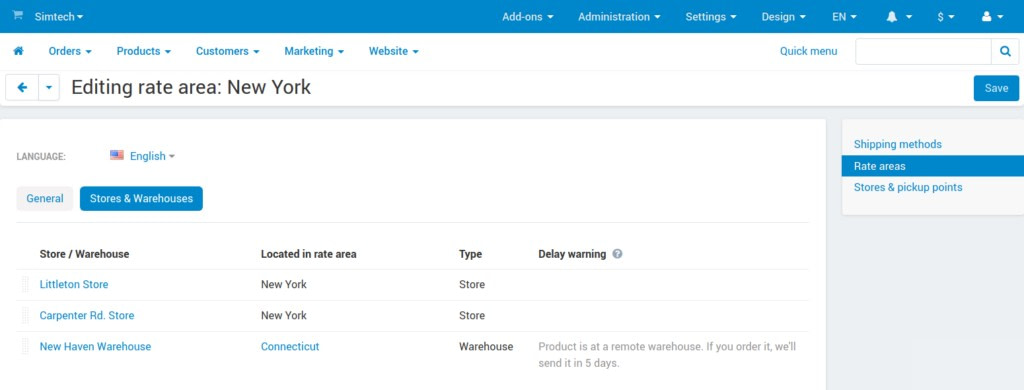
Warehouse Management in CS-Cart
- Real-time stock visibility to avoid overselling.
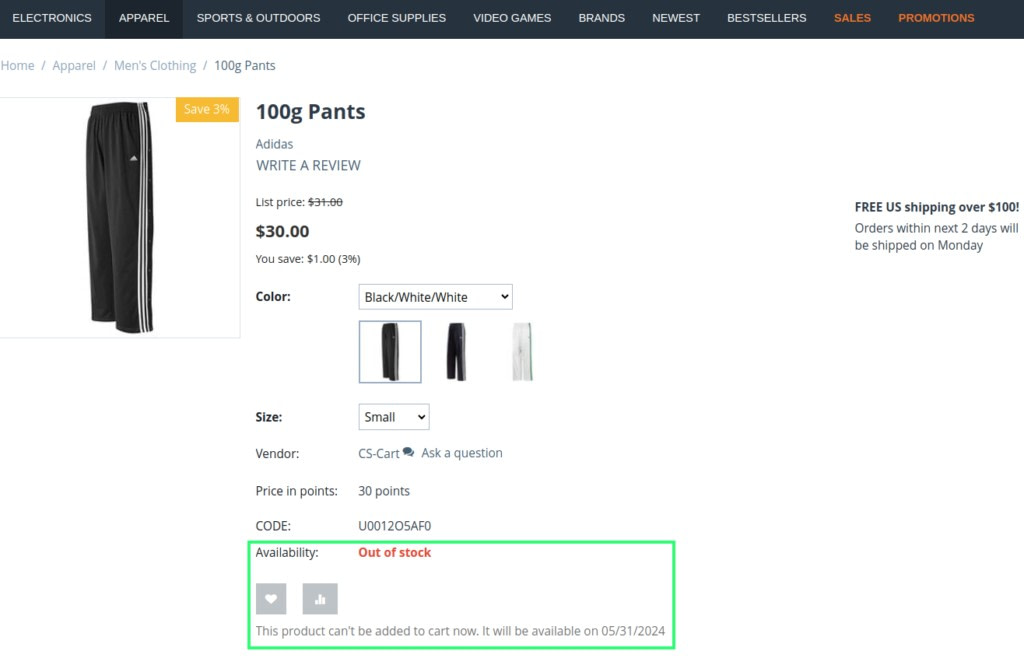
Stock Management in CS-Cart
- Backorders and partial shipments to maintain customer trust.
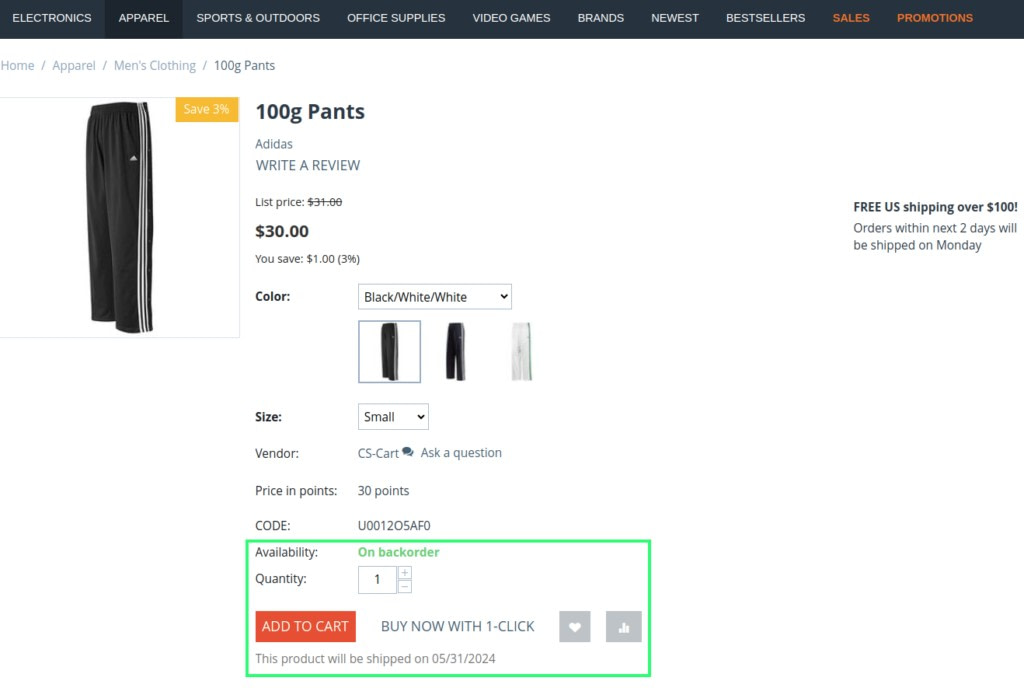
Making the Product Available for Backorder
- Support for international trade, ensuring goods can be shipped across borders efficiently.
Payments & Compliance
Wholesale transactions are more complex than retail, not only because of higher order values but also because of regulations that vary across industries and regions. A modern wholesale eCommerce platform must provide both flexibility for buyers and assurance for finance and compliance teams.
Key capabilities to look for in 2025:
- Multiple payment rails: ACH and wire transfers for large-value orders, credit card support for convenience, and installment financing to attract SME buyers who need cash flow flexibility.
- Split payments & multi-entity billing: Essential for enterprises where purchases are distributed across departments, subsidiaries, or multiple buyers within one account.
- Digital credit & BNPL for B2B: Emerging “Buy Now, Pay Later” (BNPL) providers for wholesale (e.g., TreviPay, Hokodo) enable shorter procurement cycles while minimizing supplier risk.
- Automated tax compliance: Handling VAT, GST, and sales tax across multiple jurisdictions, with exemption certificates for resellers. Built-in tax engines (e.g., Avalara, TaxJar integrations) reduce manual oversight and risk of fines.
- Industry-specific compliance:
- Healthcare & pharma: FDA and HIPAA-compliant order processing.
- Food & beverage: EGAIS/Excise duty compliance, expiration date tracking.
- Industrial goods: Export control compliance, safety documentation, customs clearance.
- Audit-ready reporting: Platforms should generate real-time, exportable financial and compliance reports that align with local and international standards.
Insight: In 2025, B2B buyers increasingly expect consumer-like convenience — but CFOs and compliance officers demand transparent, auditable workflows. Platforms that balance these needs build long-term trust and shorten procurement cycles.
Integrations, APIs, and Ecosystem
Wholesale eCommerce platforms don’t work in isolation. Success depends on how seamlessly they integrate into an organization’s broader digital ecosystem — from finance to logistics.
Core integrations for wholesale in 2025:
- ERP (Enterprise Resource Planning): Sync orders, invoices, and financial data with SAP, Oracle NetSuite, or Microsoft Dynamics to ensure accounting accuracy and real-time financial visibility.
- CRM (Customer Relationship Management): Align sales and customer service with procurement activity via Salesforce, HubSpot, or Zoho, enabling account-based selling and stronger customer retention.
- PIM (Product Information Management): Manage thousands of SKUs, specs, and media assets centrally. For industrial wholesalers with complex catalogs, integrations with Akeneo or Pimcore ensure data consistency.
- WMS (Warehouse Management Systems): Real-time connection to warehouse operations, order picking, and stock optimization, reducing mis-shipments and improving fulfillment SLAs.
- EDI (Electronic Data Interchange): Still critical for large enterprise buyers and distributors, especially in automotive, healthcare, and government procurement, ensuring standardized communication of orders, invoices, and shipping notices.
- AI-powered integrations: New APIs connect marketplaces with AI tools for demand forecasting, dynamic pricing, and supply chain optimization.
- Open APIs: Allow businesses to build custom connectors, automate workflows (e.g., linking CS-Cart to a proprietary ERP), and stay future-proof as technology stacks evolve.
When choosing wholesale eCommerce software, the platform’s ecosystem can be just as important as the software itself. A strong ecosystem includes:
- Implementation partners who understand wholesale workflows.
- Customization services to adapt the platform to unique business processes.
- Community and support for long-term scalability.
UX & Security
Even in B2B, buyers expect a mobile-first experience. Your platform should provide:
- Advanced search and filtering for large catalogs.
- SEO optimization for discoverability.
- High performance with fast page loads.
- Authentication and access control for account security.
- Data security and compliance with GDPR, CCPA, and industry standards.
A wholesale eCommerce solution that combines these features will enable businesses to compete effectively in B2B, delivering the same ease and personalization buyer experience in B2C while supporting the complexity of wholesale operations.
Choosing a Wholesale eCommerce Platform
Selecting the right eCommerce platform is critical for long-term wholesale success. Beyond the ability to sell products online, the system must support complex B2B workflows, integrate with enterprise systems, and scale as your business grows. Here’s what to consider:
Budget & TCO
When evaluating solutions, look at the total cost of ownership (TCO) — not just the license fee.
- License: one-time or recurring subscription.
- Implementation: setup, customization, integrations, and training.
- Operations: hosting, support, upgrades, and transaction fees.
Understanding the full scope of expenses helps prevent hidden costs later.
Architecture
Your platform’s architecture determines the level of flexibility:
- Monolithic platforms provide stability with all features bundled, but can be less adaptable.
- API-first or composable commerce allows you to separate the frontend from the backend, enabling custom storefronts, mobile apps, and omnichannel selling without disrupting core operations.
This choice affects innovation speed, uptime, and long-term agility.
Learn more from Monolithic vs Microservice Architecture eCommerce: Pros & Cons
B2B Feature Depth
Not all eCommerce platforms are designed for B2B. Ensure your choice offers:
- Complex pricing and contract terms.
- Account hierarchies and approvals.
- Quote and purchase order workflows.
- Strong SEO features to drive organic traffic and visibility.
Scalability & Maintenance
As order volumes rise and catalogs expand, your platform must keep up. Look for:
- Digital catalog management to handle thousands of SKUs.
- Scalability in performance and hosting for global buyers.
- Maintenance tools such as upgrades, monitoring, and automated testing.
The right wholesale eCommerce platform balances cost, flexibility, and B2B functionality, giving you a foundation that supports both day-to-day operations and long-term digital growth.
Wholesale eCommerce Platform Comparison
| Platform | Budget & TCO | Key B2B Features | Who It Fits Best |
| CS-Cart | One-time license + upgrades + add-ons | 500+ built-in features: tiered pricing, RFQ add-ons, multivendor, vendor payouts | Mid-sized businesses scaling to enterprise |
| Adobe Commerce (Magento) | High TCO: license + updates + extensions + dev | Shared & custom catalogs, quotes, requisition lists, workflow approvals | Large enterprises with complex catalogs |
| BigCommerce B2B Edition | Mid-range SaaS + extra apps | Quotes, price lists, account hierarchies, punchout catalogs | Mid-market with multiple storefronts |
| WooCommerce | Low entry, but plugins + dev costs grow | Bulk order forms, wholesale pricing via plugins | Microbusinesses and SMBs on WordPress |
| OroCommerce | Mid-to-high TCO (license + custom dev) | RFQs, corporate accounts, tiered/contract pricing, credit limits | Enterprises with ERP/CRM integrations |
| SuiteCommerce (NetSuite) | High TCO tied to Oracle ERP | Account management, credit, contract pricing, unified ERP workflows | Oracle ERP-native wholesalers |
| Shopify Plus | Subscription SaaS, paid apps add costs | Basic B2B via apps (company profiles, wholesale pricing, draft orders; no native RFQ) | SMBs / mid-market needing quick international start |
How Simtech Development Helps
Wholesale eCommerce is complex — from bulk pricing to ERP integrations — and businesses often need more than just a platform. Simtech Development helps companies launch and scale on CS-Cart with tailored solutions that fit the unique needs of B2B trade and eCommerce for wholesale distributors.
Fast Start with CS-Cart
For companies that want to enter digital channels quickly, Simtech provides a fast start on the CS-Cart platform tailored to B2B. This includes installation, configuration, and guidance so businesses can move online without delay.
Custom Features & Integrations
We helped a leading electrical equipment distributor build a custom B2B marketplace on CS-Cart that streamlined procurement, production, and sales. The solution included a flexible seller architecture (manufacturers, dealers, independent sellers), automated order routing when stock was unavailable, and advanced features like stock interception, production request management, and container optimization. We also enabled international logistics with customs support, as well as product configurators and bundles that allowed clients to customize orders with ease. As a result, the company reduced delays, optimized resource use, and gained the flexibility to scale both locally and globally.
Every wholesale business is unique. We develop custom B2B features such as tiered pricing, credit terms, and approvals, and integrate platforms with ERP, EDI, and logistics systems. This ensures smooth workflows, compliance, and readiness for new markets. Simtech also enhances performance and security to support growing order volumes.
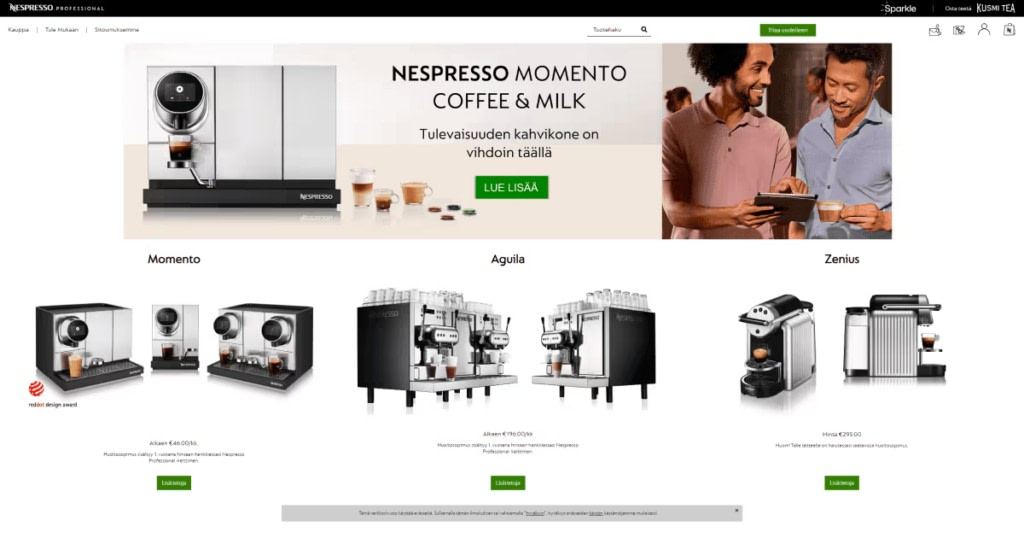
Simtech Development built a multilingual online store for Nespresso Professional’s distributor, serving clients across Northern Europe. Within six months, the team launched a Scandinavian-style website with three localized storefronts (Danish, Swedish, and Finnish), fully integrated with Salesforce CRM. We helped automate B2B workflows, including bulk ordering and supplier collaboration. The solution unified online and offline sales into a single database, automated price and assortment updates, and streamlined analytics and customer data management. As a result, sales grew by 17%, customer loyalty increased by 34%, and the site attracted over 10,000 unique visitors per month.

Another case involved a hydraulic equipment company selling complex hydraulic machinery needed a marketplace capable of handling tens of thousands of highly technical SKUs with detailed specifications. Simtech Development implemented configurators that let dealers build custom orders from multiple compatible components, reducing errors and speeding up procurement. The solution also supported multi-level dealer networks, allowing local dealers to manage their own catalogs and pricing while the central operator retained oversight. This setup simplified international sales, improved stock management, and gave both dealers and customers transparency in complex supply chains.
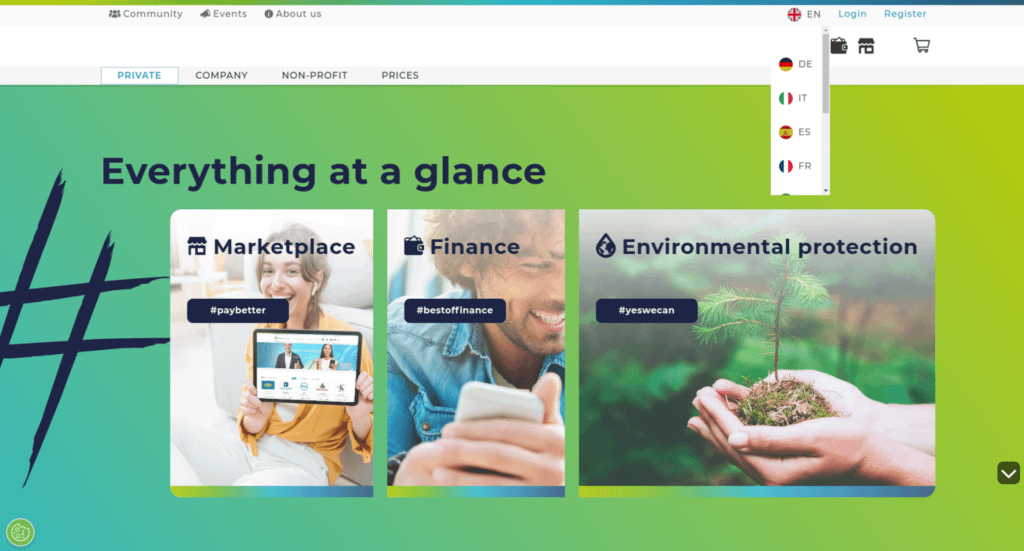
Simtech Development helped a leading European manufacturer of tabletop water filters launch a marketplace demo in just 30 days for an international exhibition, later scaling it into a global digital ecosystem with 99,000 active users. Using CS-Cart as the core, the team integrated the platform with the client’s internal CREA system for unified login and user management, connected to WildFire for cross-sales and cashback mechanics, added advanced vendor storefront templates and multilingual support, and built custom filters to ensure transparency for international trade. The project not only secured investor interest but also positioned the client for long-term growth in Europe and beyond, demonstrating how a rapid MVP can evolve into a scalable international marketplace.
All these projects highlight how a strong ecosystem — software plus services — ensures that wholesale businesses not only launch successfully, but also scale and integrate with mission-critical systems.
Ongoing Maintenance
Wholesale doesn’t stop at launch. Our company provides continuous updates, monitoring, and optimization, so the platform can handle increasing order volume, seasonal peaks, and new integrations over time.
Conclusion
Wholesale eCommerce in 2025 demands agility, automation, and trust. With the right platform and partner, businesses can move beyond trade shows and offline deals, and build scalable digital channels that engage buyers directly.
Simtech Development and CS-Cart give wholesalers the tools to serve complex B2B accounts and buying committees, integrate with POS systems, and open new markets with confidence.
